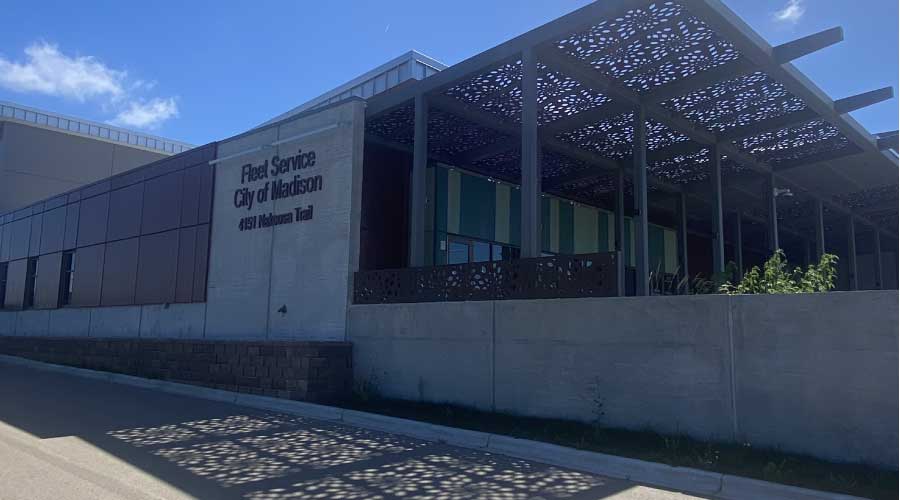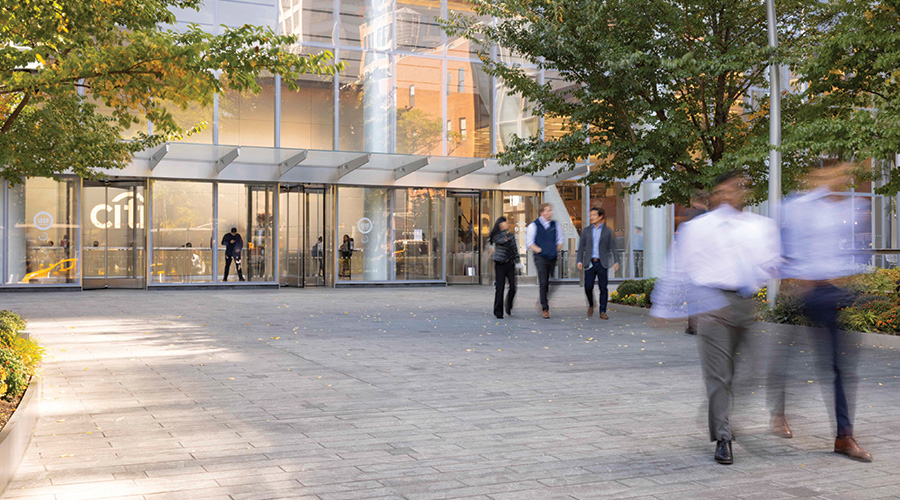Facility Managers Using LEED-EBOM As Blueprint for Sustainability
Simply considering green is no longer optional. It may not be too long before conventional buildings are rendered obsolete. More frequently, facility managers are using the LEED for Existing Buildings: Operations and Maintenance (LEED-EBOM) rating system as a blueprint for their sustainability plans. But what does it take to manage the LEED-EBOM certification process? What follows is a tip sheet for facility managers to make sure they get the best results from their LEED-EBOM initiatives.
1. Build a Diverse Project Team
A project team should be assembled at the outset of any effort to green an existing building. This team should include representatives of several departments, including facilities management, engineering, maintenance and cleaning, purchasing, leasing and legal.
A diverse project team leverages the breadth of institutional perspectives and skill sets, facilitates communication and integration, permits responsibilities to be divided into manageable pieces, and enhances the likelihood of companywide buy-in.
Use of in-house personnel also should reduce the cost of outside consultants in areas such as information collection, and thereby increase consultant time on technical issues. A team member with a long history at the company should lead the team, and help decide whether, and to what extent, certification will be pursued.
Facility managers' reasons for greening an existing building vary widely: lowering energy consumption; developing a green real estate product that is marketable to existing and prospective tenants; creating a model for greening all of the buildings in an owner's portfolio; enhancing an asset's market value by reducing its operating costs; minimizing a property's carbon footprint; reducing the demand on non-renewable resources; or any combination of the above.
2. Set Appropriate Credit Goals
A goal to achieve a particular LEED-EBOM rating does not automatically translate into a building that meets facility managers' particular green visions. Beyond LEED-EBOM's prerequisites, USGBC does not dictate which credits a project team has to achieve. The selection of the credits and points to target, therefore, depend upon the particular goals and motivations driving the pursuit of LEED-EBOM certification in the first place and be consistent with budgetary constraints. It is essential at the outset of a project to establish, and communicate, a clear set of goals and objectives that work for the organization and have a reasonable chance of being attainable.
3. Perform a Building Audit
The first step in any LEED-EBOM effort is to audit a building's current energy performance and operations by collecting information required to demonstrate compliance with the rating system's prerequisites and credits.
Information to be collected includes utility bills, water bills, trash removal bills, tenant improvement and preventive maintenance policies and specifications, and landscaping and cleaning products and practices.
The building audit will reveal the gap between current operations and the requirements for certification. The project team can then assess the feasibility of certification, weigh in on the credits that are and are not achievable, and develop a time frame based on specific objectives and budget.
Most significantly, the gap analysis will reveal how close the facility is to meeting the requirements of LEED-EBOM's prerequisites. If certification is a goal, all prerequisites must be met.
4. Pursue Certification Incrementally Beginning with Retrocommissioning
LEED-EBOM should not be viewed as a one time, "up or down" proposition, but rather as a suite of initiatives and tools to increase a building's energy efficiency and sustainable operations over time.
As one of LEED-EBOM's key tools, the retrocommissioning process required to earn Energy & Atmosphere credits 2.1 and 2.2 will typically reveal many no-cost/low-cost measures which, apart from satisfying a number of credits, can be adopted to improve energy efficiency, enhance the sustainability of operations and garner energy savings that can be used to finance other improvements.
By pursuing an incremental approach, facility managers can fulfill some of their sustainability objectives before formal certification is pursued. Moreover, the education, training and experience of staff, tenants and vendors will enhance the likelihood of successfully meeting LEED-EBOM requirements. One major property manager, Jones Lang LaSalle, has summarized this incremental approach to improving a building's sustainability as follows: First, do what you can for free. Then, consider low-cost, quick payoff improvements. And finally, budget for longer term, big payoff strategies.
5. Pay For It
Financing the upgrades necessary to achieve higher performing buildings and LEED-EBOM certification remains the biggest challenge to greening existing buildings. Incentives — in the form of tax credits, tax deductions and rebates, offered by federal, state, and local governments and utilities — continue to expand, and facility managers should investigate how they can take advantage.
For example, under EPAct the federal tax credit of $1.80 per square foot for energy efficiency retrofits that achieve 50 percent savings against a referenced standard (American Society of Heating, Refrigerating and Air-Conditioning Engineers 90.1-2001), or $0.60 per square foot for measures affecting a building's heating and cooling, building envelope or lighting systems, has been extended until 2013. (For more on EPAct tax incentives for HVAC systems, see Tax Deductions for HVAC Efficiency.)
A compendium of incentive programs can be found at the Database of State Incentives, www.dsireusa.org.
A breakthrough in reducing the upfront cost of energy retrofits emerged in California in 2008 with the advent of Property Assessed Clean Energy (PACE) bonds. PACE bonds are debt instruments issued by a municipality or development district and backed by property tax liens on buildings whose owners take PACE loans from a bond pool. PACE bonds enable property owners to repay the cost of energy improvements over twenty years through an increase in a building's annual property taxes of one-twentieth of the loan amount plus interest.
PACE bonds are attractive to investors because they are backed by property taxes — which have very low default rates. In contrast to traditional loans, PACE bonds survive a foreclosure; the new owner who buys the building must immediately bring the tax payments up to date.
Since 2008, PACE-enabling legislation has been passed in 13 states and, most recently, in the District of Columbia with legislation pending in two more states. Two more states have existing ability to launch PACE programs. According to PACE Now, an independent coalition of PACE bond supporters, it is estimated that the potential for PACE bonds could exceed $500 billion.
6. Buy Green Insurance
Traditional insurance products may fall short of providing adequate coverage for the combination of requirements and specialized materials and systems used in green buildings.
In a June 2008 survey, The Green Built Environment in the United States: The State of the Insurance Marketplace, global insurance broker Marsh identified several property insurers that have already introduced green endorsements to their standard property forms or specific insurance policies for LEED certified buildings. Programs include, for example, coverage for non-toxic, low odor paints and carpeting; interior lighting systems that meet LEED standards; water-efficient plumbing; Energy Star qualified roof and insulation materials; and the additional cost of having a building certified.
According to Marsh, green enhancements to builder's risk polices are of even more recent vintage. Marsh notes, however, that builder's risk coverage varies by market so conducting a policy form comparison is required.
LEED certification is fast becoming the standard against which a building's commercial value is being judged. Given the stakes, it is essential for property owners and managers to carefully and systematically assess the feasibility, and relative costs and benefits of LEED-EBOM certification.
Leonard S. Goodman, Esq., LEED-AP, is a partner with Venable LLP and focuses on construction transaction and litigation.

Related Topics:















